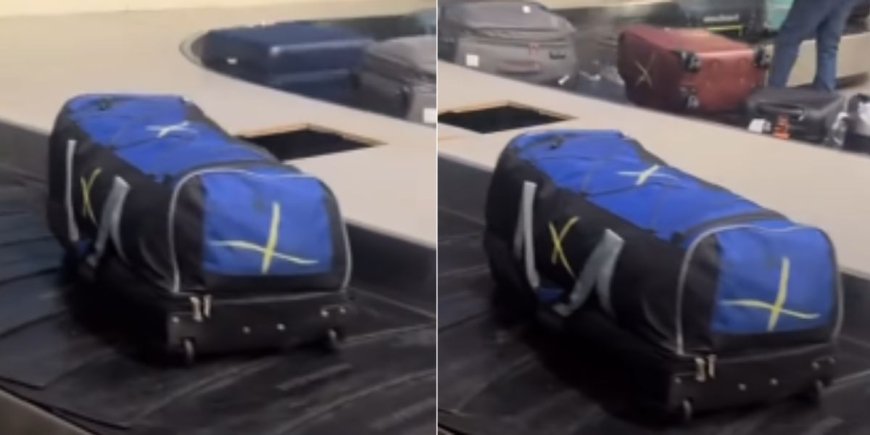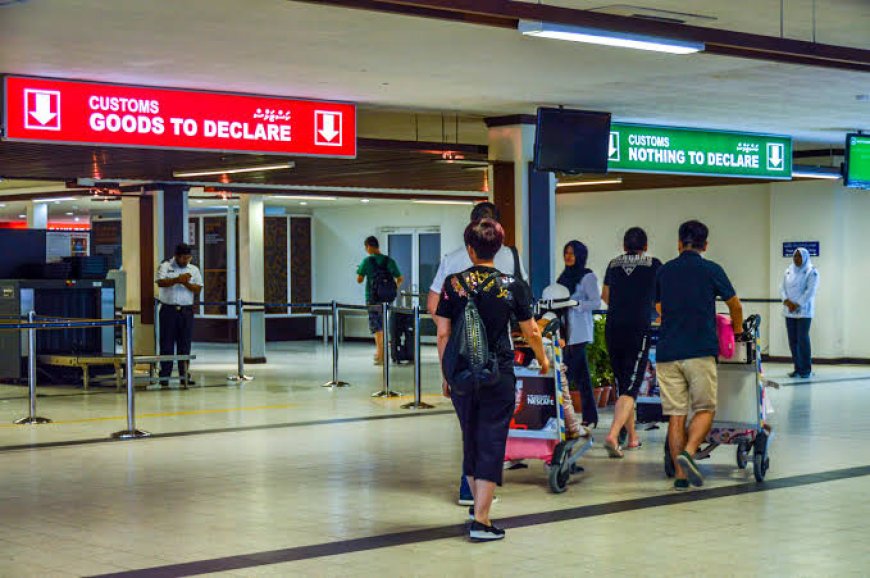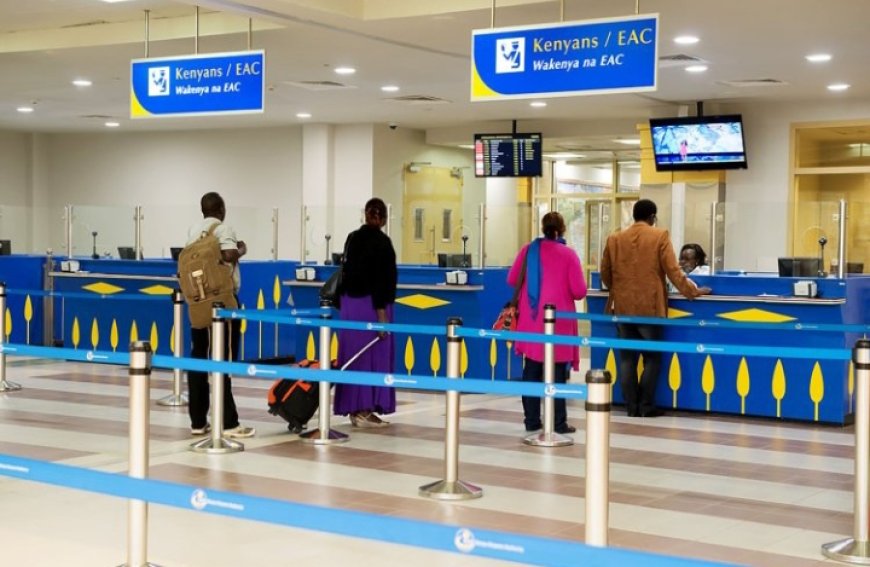What That 'X' Marked On Your Luggage At An Airport Means
Some bags coming off the carousel or passing through security have a chalk or marker "X" labelled across them. If you have seen it or had it on your bag, you're not alone.

Have you ever been to airports in Kenya such as Jomo Kenyatta International Airport (JKIA) in Nairobi or Moi International Airport in Mombasa and noticed an 'X' mark on your bag...that is easily added to the top 10 things that scare you about navigating airports?
We are NOT talking about your 'ex' in this article, that's a story for another time. In our usual scrolling of the internet, we noticed a viral clip showing a bag marked with X on all corners, prompting us at Viral Tea to find out what it means.
Some bags coming off the carousel* or passing through security have a chalk or marker "X" labelled across them. If you have seen it or had it on your bag, you're not alone.
*Carousel is a conveyor system at an airport from which arriving passengers collect their luggage.
Most travelers have no clue what that "X" actually signifies. To some, it seems random, but to those who know the drill, that mark can mean the difference between a smooth exit and getting pulled aside by customs officers. In our case, those from the Kenya Revenue Authority (KRA).

Passengers queuing outside Customs desks at JKIA. /X.MOHAMED HERSI
What Is the “X” Mark?
The “X” mark is a subtle but deliberate indicator made by airport security or customs officers. It is typically drawn with a white or yellow chalk or sometimes a marker.
This is not a stamp or barcode. It is not digital or official-looking in the traditional sense, but it carries real meaning behind the scenes. That mark is often applied after a bag goes through scanning or a quick manual inspection and signals that airport or customs officials need to give it a second look.
No, it’s not graffiti, neither is it airport staff being careless. It is a code—a quiet form of communication between teams at the airport. In Kenya, where customs enforcement has been heightened in recent years, it can mean you are on someone's radar.
How the “X” Ends Up on Your Bag
The “X” usually shows up for a few different reasons, and understanding them helps travelers know what to expect.
Suspicious or Unclear Contents on Scanner
If your bag goes through the X-ray and something looks off—maybe a strange shape, dense packing, or items that could be misinterpreted (electronics, powders, bundles of fabric, etc.)—a security agent might mark it for further inspection.
They don’t always stop the bag immediately; sometimes they let it go through but mark it with an "X" so another team down the line can handle it.
Random Checks and Profiling
Kenya, like many countries, performs random checks. However, “random” doesn’t always mean what it says.
Travelers who fit certain profiles (frequent flyers from certain countries, solo travelers, or those coming from known smuggling routes) are more likely to get that “X.” In some cases, race, accent, or even how expensive your luggage looks can factor into the decision.
Past Infractions or Customs Flags
If a traveler has previously been caught with undeclared goods or even just questioned, customs might put them on an informal watchlist. Bags that appear linked to such travelers (by luggage tags, frequent flyer info, or shipping labels) may be marked for a closer look next time.
Luggage Weight and Shape
If you are known to pack heavily anytime you travel, stop reading this article.
Oversized or abnormally shaped bags sometimes get flagged just because they don’t fit the typical pattern. A big, heavy suitcase packed tight raises questions: Are you hiding something valuable? Are you smuggling in undeclared goods?
What Happens When Your Bag Has the “X”?
If your luggage is marked, don’t panic—but don’t ignore it either.
You Get Called Aside at Customs
As you exit the baggage claim area, customs officers might ask you to step aside, during which they will look for the “X". If they see it, they’ll likely ask you to open your bag.
Be polite but know your rights. They are looking for dutiable items—things like electronics, new clothes with tags, liquor, cigarettes, or any other import-restricted goods.

Luggage at an airport in Kenya. /KENYA GEOGRAPHIC
You May Be Asked to Pay Import Duty
KRA has been cracking down on travelers bringing in undeclared items. If you're carrying stuff over the allowed limit—like phones, designer clothes, cameras—you could be charged import duty.
The “X” is basically the first step in that process. It means you're being looked at more closely.
Delays
Sometimes, even if there’s nothing wrong in your bag, the inspection process itself causes delays.
You might miss a connection or be held up waiting for an available customs officer. It is annoying, especially if you are jet-lagged and just want to get home.
Why It Matters To Kenyans
In Kenya, this “X” mark isn’t just bureaucracy—it’s a symbol of a larger system of security, enforcement, and yes, sometimes even corruption.
Tax Revenue and Crackdowns
Kenya has been losing millions to untaxed imports through airports. The KRA and Kenya Airports Authority (KAA) have been under pressure to recover lost revenue, hence customs enforcement has become tighter in recent years, especially with high-value goods.
The “X” is part of that infrastructure and a pre-emptive filter to catch people bringing in goods without declaring them.
Smuggling and Drug Trafficking Concerns
Kenya has been accused of being a known transit hub for smuggling routes—whether it is drugs, counterfeit electronics, or endangered species products.
The authorities are thus hyper-vigilant, and rightly so. That “X” helps them target and disrupt those activities without checking every single bag, which would be logistically impossible.
Corruption and Informal ‘Fines’
Here’s the ugly truth: not every customs officer operates by the book. In some cases, the “X” is used as a way to hunt people down for bribes.
Travelers may be told their items are suspect, only to be let off the hook after paying an “on-the-spot fine” that never gets officially recorded. While not every officer does this—and many are professional—this is a reality that travelers to Kenya need to be aware of.
Lack of Awareness Among Travelers
A lot of people just don’t know their rights or the importation laws. They bring in goods thinking it is smooth-sailing, only to get surprised when they’re flagged.
Some are even carrying items for friends or family, not realizing they’re liable for them. The “X” becomes a wake-up call—and often an expensive one.
How to Avoid Getting Marked
There’s no guaranteed way to dodge the “X,” but there are things you can do to reduce your chances of being flagged:
-
Know the Import Rules: Research on what you’re allowed to bring into Kenya duty-free. Declare what needs to be declared.
-
Don’t Overpack or Pack Suspicious Items: Avoid wrapping gifts in foil, using multiple layers of packaging, or carrying obscure electronics in bulk.
-
Act Calm and Composed: Looking nervous, rushed, or overly defensive can make you a target.
-
If It Happens, Cooperate—but Don’t Get Bullied: If your bag is marked and you get stopped, be courteous. But if someone starts demanding a “fine” with no paperwork, ask for a supervisor.
The Bigger Picture
At the end of the day, the “X” on your luggage at a Kenyan airport is a tiny mark with big implications. It represents security protocols, government enforcement, and sometimes deeper systemic issues like corruption or unequal treatment of travelers.
Understanding it is about more than just protecting your own bags—it is about understanding how travel intersects with national policy, international trafficking, and personal rights.
It also speaks to a global reality: as air travel grows and more people move across borders, governments are increasing surveillance, security, and tax collection at ports of entry, and Kenya is no exception. The "X" is just one part of a much bigger play.
So next time you see that mark—or notice an agent marking it with chalk on someone else’s bag—know that it is not random. If it is on yours, don't be scared but ready because at Kenyan airports, that “X” could mean everything.







